During the weeks leading up to the liberation of Paris on 25 August 1944, local French résistants were at a distinct disadvantage: they lacked guns and ammunition. Another disadvantage they and their fellow Frenchmen faced was the increasing brutality of the occupiers and collaborators, both of whom knew their days of occupying Paris were numbered (known as la grande fuite des Fritzs or, the great flight of the Germans). The last military governor of Paris, General Dietrich von Choltitz (1894-1966) was appointed by Hitler on 7 August 1944 to defend the city at all costs or destroy it. Facing increasing resistance each day, von Choltitz gave the orders to his troops on 15 August to “repress by all means and if necessary, mercilessly the partisan insurrection.”
After the Allied invasion in Normandy on 6 June 1944, the Germans stepped up their surveillance and arrests of resistance members, actual or suspected. During the next two and a half months, murderous retaliation by the Wehrmacht, the Schutzstaffel (SS), Gestapo, and the Milice (French paramilitary collaborationist organization) grew with each passing day.
Today’s story is about a French traitor ⏤ collaborationist is probably a nicer term ⏤ and the role he played in the massacre of forty-two young résistants less than ten days before the liberation of Paris.
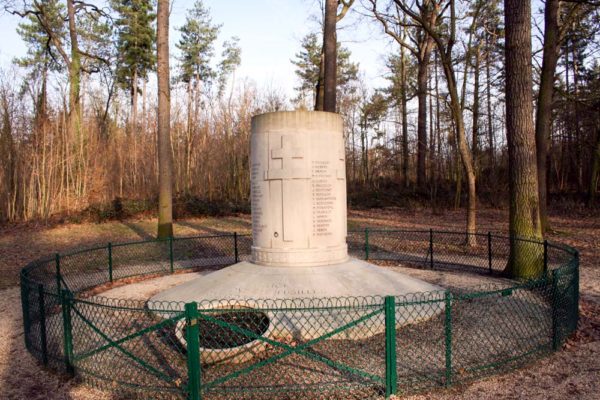
Did You Know?
Did you know that I hate words that send me to the dictionary to look up their meaning? It’s annoying because I have to take a break from the story. I recognize and admit it’s my fault for not paying attention in my high school English classes. I don’t mind the occasional word from outer space because it forces me to learn something new ⏤ not that I’ll remember it. But when I have to stop after every sentence, it gets annoying. I recently read an article in the Wall Street Journal about the movie “Chinatown” with Jack Nicholson. It was a great movie! The article? I really can’t say the same about it. I started reading but went crazy when every other word sent me to the dictionary to look up the definition. I really execrated those people who passed high school English with preternatural ease. So, all I want to say to every author is please drop the intellectual urge to make us all feel really vacuous.
The Young Combattants
During the early days of August 1944, members of organized resistance groups who had official orders from the Allies were supplied with plenty of guns and ammunition. However, it would be a matter of weeks before the Allied troops showed up to liberate Paris and dozens of unarmed young résistants from four separate resistance organizations wanted to make sure they and their comrades were ready when that day came.
The Jeunes Combattants Chrétiens (JCC) or, Young Christian Fighters was a Catholic resistance movement formed in Lyon in November 1941. Michelle Boursier, a law student whose nom de guerre was Diane, was a senior member of the JCC. One of the JCC’s most notable sabotage acts had been the destruction of tens of thousands of STO (compulsory labor service) files by Abbé Raymond Borme’s group on 25 February 1944.
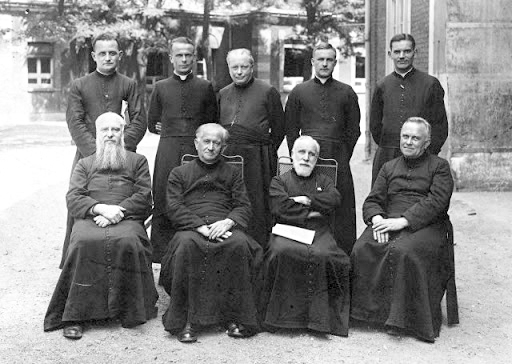
The Organisation civile et militaire (OCM) or, Civil and Military Organization was a very well-respected resistance group. It was one of the eight large resistance organizations which made up the National Council of Resistance (CNR). The OCM network in Paris was led by Guy Hémery.
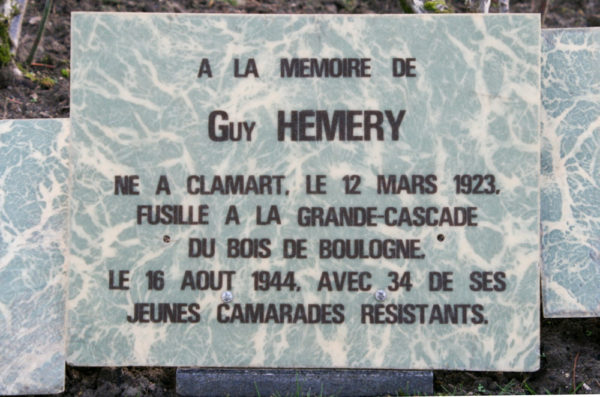
The Franc-Tireurs et Partisans (FTP) was the largest resistance organization in France and it represented the Communist Party. The FTP was the best organized and probably, the most effective of all the resistance efforts during the occupation. Twenty-two-year-old Jacques Schlosser led a band of young FTP members from the commune of Chelles, fifteen kilometers (9.3 miles) east of Paris.
The fourth resistance group in our story is the Forces françaises de l’Intérieur (FFI) or, French Forces of the Interior. The FFI was Charles de Gaulle’s formal name for the French resistance fighters during the later stages of the war. In Paris during August 1944, one of the FFI groups was led by Jean Favé and twenty-eight-year-old Dr. Henri Blanchet (1916-1944).
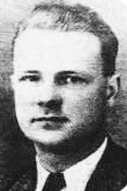
Captain Jack
Guy Glèbe d’Eu, count of Marcheret (1914-1949) was the son of a Frenchman and a Russian woman. He was fluent in French, English, Italian, and German. Captured by the Germans, he was released from a POW camp in June 1940 and promptly offered his services to the German Service of Information (SRA), an intelligence service closely associated with the Abwehr (German military intelligence) and Gestapo. Over the next four years, Marcheret became an expert at setting traps to capture his prey.
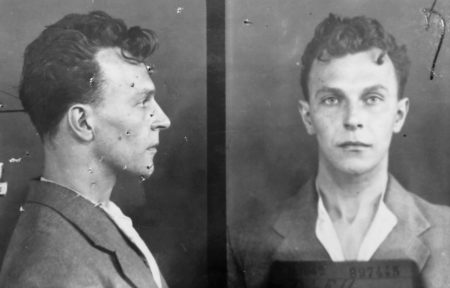
Operating under the pseudonym, “Captain Jack,” Marcheret presented himself as a classic Englishman with an Oxford accent. His specialty was recruiting résistants who thought they were working with a well-connected British spy. Captain Jack would ultimately betray them by setting traps where the unsuspecting résistants would be captured by the Germans.
In mid-June 1944, Captain Jack along with Sicherheitsdienst (SD; Nazi party intelligence) agent, Karl Rehbein, was assigned the task of setting a trap to capture a large group of young résistants known to be looking for guns and ammunition.
The Trap
Wigen Nercessian (1904-???) was a White Russian who escaped to France after the Russian Revolution. Nercessian was a legitimate but naïve résistant and he had been compromised in early 1944 while working in Marseilles for an escape line. After moving to Paris, he was introduced to Karl Rehbein who was operating under the alias of Charles Porel and posing as an Austrian Jew and British agent who had unlimited funds available to him. Nercessian befriended the Abbé Raymond Borme (1904-1962), president of the Society of Saint Vincent de Paul and a leader of the JCC. Porel had given Nercessian fifteen thousand francs and Borme assumed his new friend was a well-funded résistant. Borme advised Hémery to contact Nercessian to source the guns through Porel. Unfortunately, Nercessian did not heed Dr. Blanchet’s advice that any deal with Porel might be suspect.
Nercessian contacted Porel but was told that armaments were not his specialty. So, an introduction was made to Captain Jack. During the meeting, Jack questioned Hémery about his resistance contacts and they agreed to meet a second time on 11 August at the Régence Café.
At the second meeting, Hémery and Jean Favé met with Captain Jack and Porel ⏤ Nercessian was in attendance albeit silent. Jack set the terms of the deal: the résistants would supply the men and some trucks while British Intelligence would provide the weapons and a couple extra trucks. He did not disclose where the pick-up would take place five days later.
On 16 August at 10:00 AM, the JCC arrived at the prearranged place to board their truck but learned it had broken down. They found bicycles and finally made it to the Porte Maillot where Hémery and others were waiting. Captain Jack was there with three trucks. Captain Jack insisted they get into one of the trucks he supplied and confiscated the guns carried by four of the résistants. The truck was loaded with fourteen young men and a woman: Diane. They were on their way to the garage at 11 bis passage Doisy (18-20, rue d’Armaillé) to pick up the guns and ammunition. Minutes later, the truck arrived at the garage and the passengers quickly found out they were surrounded by German vehicles. They immediately realized they had been betrayed.
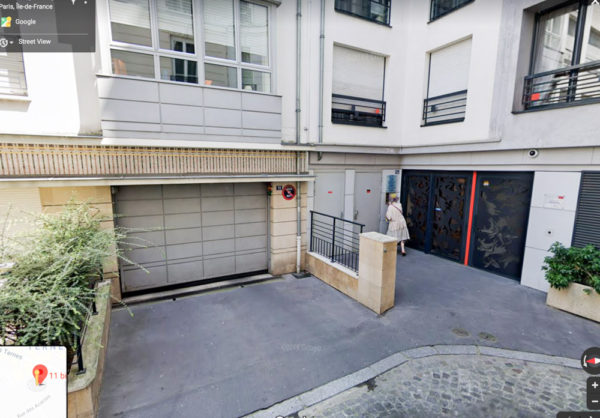
The Arrest
With machine-guns firing over the top of the truck and the Germans yelling “Raus! Raus!,” the fifteen résistants were ordered to get out. They were immediately captured by heavily armed SS men, several Gestapo agents, and a member of the Milice.
After a while, the prisoners were loaded back into the truck and taken to Gestapo headquarters at 11, rue des Saussaies where it was chaos with the Germans preparing to evacuate. They were herded into the courtyard and made to stand against a wall with their hands up for several hours. Diane last saw her compatriots in the courtyard before she was hauled off to a cell and the others were taken inside.
Captain Jack’s treachery was not over. With the assistance of Nercessian, he was able to lure another group of young résistants to 14, rue Leroux near Avenue Foch and Gestapo offices. There they were arrested and held until the evening. One more ambush by Captain Jack and Charles Porel yielded another group of résistants thinking they were going to get guns. Now, the Nazis had thirty-four prisoners in custody.
Around the same time, Dr. Blanchet was shot and killed by SS-Hauptsturmführer Fredrich Berger at his headquarters, 180, rue de la Pompe. Berger was in charge of the operation and Marcheret and Porel reported to him. Along with ordering the execution of the thirty-four young résistants, killing Blanchet would be one of the last official acts Berger performed before leaving Paris. Charles Porel was not far behind in exiting the city.

The Cascades at Bois de Boulogne
During the early evening hours of 16 August, the Gestapo’s prisoners were loaded into trucks and taken to the Bois de Boulogne, a large public park located at the western edge of the 16th arrondissement. Slightly smaller than Bois de Vincennes on the eastern side of the city, it is one of the last remnants of an ancient forest where the kings once hunted. The park has several lakes, English-style landscaping, and a cascading waterfall.
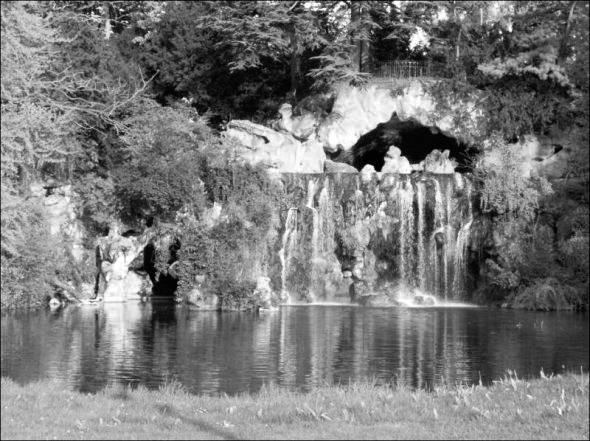
The résistants were taken out of the back of the trucks, marched to the banks of the waterfall, and mowed down by SS machine guns. Then to make sure they were all dead, three grenades were thrown onto the pile of bodies. Their remains lay there until the next morning when the chief caretaker of the nearby École des Cadres de Bagatelle came upon the corpses on his way to work. Thirty-four men were executed next to the “Cascades” but there were thirty-five bodies. After Berger murdered Dr. Blanchet, he loaded the doctor’s body into the trunk of his car and had it taken to the Cascades where it was dumped onto the pile of the other victims.
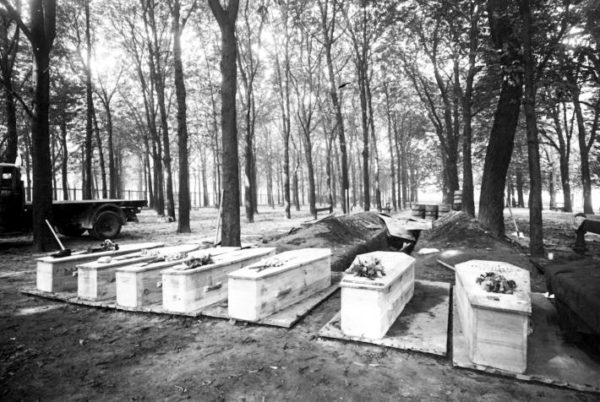
The French police had gone on strike the day before, so it was up to the park’s guards to dispose of the victims’ remains. Thirty-five bodies were taken to Biguet Garage at 65, rue Chardon-Lagache (16e). The remains of seven other résistants from the Gestapo headquarters on Avenue Foch were also brought to the garage. On 17 August, Diane was asked to assist with the identification of the murdered victims. Diane could only identify nine of them including Guy Hémery. The rest were identified by the Red Cross except for Dr. Blanchet ⏤ M. Blanchet identified his son. The unclaimed bodies were buried in the Bagneux Cemetery.
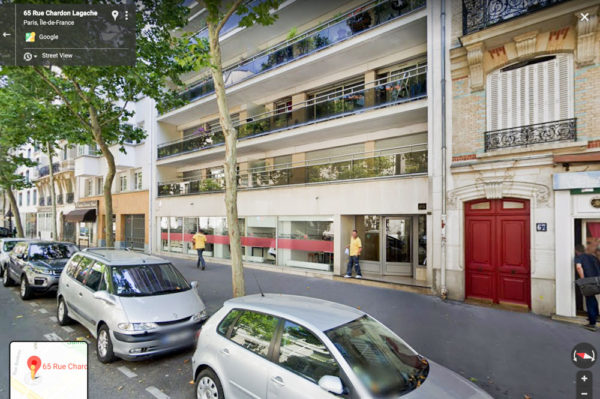
Abbé Borme, Nercessian, and another résistant quickly worked out the role that Porel had played. Needless to say, Borme and Nercessian were distraught over learning they had played such a major role in the capture and murders of the young men.
Almost all the victims were under the age of twenty-five with the youngest, Jacques Delporte, aged seventeen. All told, forty-two résistants were murdered on 16 August as a result of the treachery by Captain Jack and Charles Porel.

Post War Consequences
Former SS-Hauptsturmführer Friedrich Berger (1911-1960) was arrested in 1947 but managed to escape. He was sentenced to death in absentia on 22 December 1952. According to a declassified dossier from November 1948, Berger was “still in flight” at that time. He was never caught and died of an illness on 10 February 1960 at his home in Munich, Germany.
Gestapo group leader, Guy Glèbe d’Eu, Count de Marcheret or, “Captain Jack,” was arrested by the Allies in Denmark and turned over to the French police on 25 October 1945. He appeared in the Paris Court of Justice on 2 April 1949 and claimed the Germans had placed a “photo-electric cell” in his brain. He was convicted of the murders at rue Leroux and the Cascade du Bois de Boulogne. Marcheret was executed by firing squad at 8:30 AM on 20 April 1949 at Fort Montrouge.
Former SS-Hauptsturmführer Alfred Wenzel (1910-???), Porel’s Nazi controller, was sentenced to five years of forced labor.
The killers, including Georges Vaugeois, Georges Guicciardini, Georges Gorisse, Poupet, Favriot, and Leclercq, were sentenced to death. Only three were executed. They were all French collaborators.
Dr. Blanchet was buried in the military square of the Chelles cemetery. He was decorated with the War Cross, the Legion of Honor, the Military Medal, the Resistance Medal, and officially certified as a résistant.
Wigen Nercessian was awarded the Croix de guerre for his resistance efforts.
Karl Rehbein (Charles Porel) told his interrogators in 1946 that Nercessian never knew he was working for the Nazis. He said Nercessian was a bonafide résistant and always obeyed Porel’s orders but was very sloppy in doing background checks. Charges against Rehbein were dismissed.
Michelle Boursier (Diane) was beaten and locked in a Gestapo cell. But later in the evening, she was released with no explanation. The question is why did they release her? Perhaps the Germans had an aversion to killing a woman? Unfortunately, that didn’t stop them from shooting other women prisoners as the Germans fled Paris (e.g., Suzanne Spaak). Boursier was interrogated at length after the liberation and released. She would never be able to shake off the underlying suspicions.
Jean Favé managed to escape from the Germans on the evening of 16 August and survived the war. Because of the ease in which he escaped, Favé came under suspicion as a German accomplice. Favé was imprisoned until July 1948 when he was released.
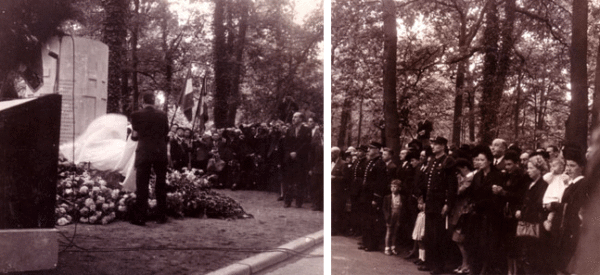
A monument was erected in 1946 on the site of the massacre. Two oak trees on either side bear a sign that reads, “Passer-by: Respect this oak. It carries the traces of the bullets that killed our martyrs.” It is referencing the machine gun bullet holes you can still see today. Click here to watch a video commemorating the 70th anniversary of the massacre.

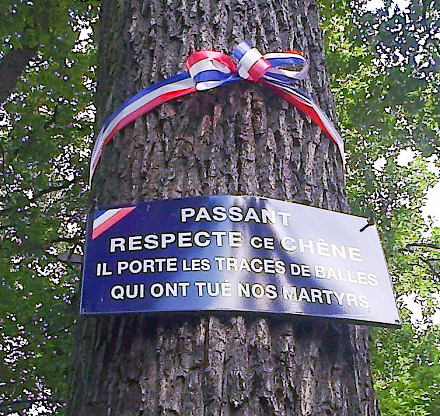
✭ ✭ ★ Learn More About Captain Jack and the Massacre ✭ ★ ★
Cobb, Matthew. Eleven Days in August: The Liberation of Paris in 1944. London: Simon & Schuster, 2013.
Drake, David. Paris at War, 1939-1944. Cambridge: The Belknap Press of Harvard University Press, 2015.
Moore, William Mortimer. Paris ’44: The City of Light Redeemed. Oxford: Casemate Publishers, 2015.
Neiberg, Michael. The Blood of Free Men: The Liberation of Paris, 1944. New York: Basic Books, 2012.
Rankin, Nicholas. Ian Fleming’s Commandos. Oxford: Oxford University Press, 2011.
Disclaimer:
There may be a chance that after we publish this particular blog, the video links associated with the blog are no longer accessible. We have no control over this. Many times, whoever posts the video has done so without the consent of the video’s owner. In some cases, it is likely that the content is deemed unsuitable by YouTube. We apologize if you have tried to access the link and you don’t get the expected results.
What’s New With Sandy and Stew?
As I mentioned in my previous blog, I’m making substantial progress toward finishing volume one of the next two books. See what happens when you don’t travel and are forced to stay home? I hope to have all the walks written by the end of July or beginning of August. At that point, the real work begins. I call it “chewing the cud” ⏤ it’s the editing process. By the time the book is printed, we will have read it a hundred times and I’m not counting the time my editors put in. After the manuscript passes muster with our editor and proofreader, it will go to our “Everything French” proofreader (Jeanne). Even with five sets of eyes and multiple reads, we always miss something. Even the “big boys” publish books with editing mistakes so I guess we’re in good company.
Thank you to all of you who subscribe to our bi-weekly blogs. It seems there isn’t a day that goes by where we don’t increase our readership. Please let your history buff friends and family members know about our blogs.
Someone Is Commenting On Our Blogs
I’d like to thank one of our readers who went back into the blog archive and read Hitler’s Blood Judge (click here to read). She contacted us because the links to some of the videos did not work. I appreciate the heads up. I get the videos and links through YouTube. Sandy went back to investigate and sure enough, several of the links were taken down by YouTube. We can only guess why the videos were no longer available.
So, we decided to create a disclaimer (see above) for future readers who go into previous blogs. We hope that helps eliminate some frustration.
If there is a topic you’d like to see a blog written about, please don’t hesitate to contact me. I love hearing from you so keep those comments coming.
Why Would You Want To Buy Our “Walks Through History” Books?
Simple.
You like to travel and experience history and historical events. You like to see original buildings that had a significant impact on the people and events of the history you’re engaged with. You want to know the stories behind the brick and mortar in front of you.
The walking tour books are meticulously researched so you can go directly to those sites and learn about the building’s history as well as an introduction to some of the more interesting people associated with it.
We Need Your Help
Please tell your friends about our blog site and encourage them to visit and subscribe. Sandy and I are trying to increase our audience and we need your help through your friends and social media followers.
Thank You
Sandy and I appreciate you visiting with us. We have some exciting things on the horizon and we’ll keep you updated as we go along.
Share This:
Follow Stew:
Find Stew’s books on Amazon and iBooks.
Please note that we do not and will not take compensation from individuals or companies mentioned or promoted in the blogs.
 Walks Through History
Walks Through History
Copyright ©2020 Stew Ross


Thanks Stew. Brilliant read.
Best wishes,
Richard.
Hi Stew,
That was a fascinating read thank you and links to the work I am doing to revise my Father’s memoirs “The RAF in Buchenwald” . So many of the 168 Allied airmen who were caught by the Gestapo in 1944 and transported to Buchenwald were betrayed by either Jean-Jacques Desoubrie or Captain “Jack” – Marcheret . Could write about “Drago” some time please he is also part of the double agent group involved in this mass betrayal.
Hello,
I just read your article so well documented and discover photos of this traitor “Captain Jack” and Abbé Borme that I had never seen!
I am very interested in this episode because my grandfather, Henri Cerisier, a policeman and resistance fighter, participated in the investigation and the arrest of “Captain Jack”, at the request of the American services.
My grandfather had hosted American soldiers including Sergeant Arthur Pelletier, arrested and deported in July 1944 in Buchenwald. He also escaped in extremis the massacre of the Cascade of the Bois de Boulogne (at the last moment he could not go to the rendezvous to take up arms).
Thank you for this article and for your blog that I just discovered 🙂
Un grand bravo à vous de France !
Hello Blandine; thank you so much for sharing this story about your grandfather. He is indeed lucky to have missed that meeting with the young resistance fighters. Interesting about the American soldier. He was one of the 168 downed Allied airmen sent to Buchenwald to be executed. He was just as lucky as your grandfather. You can read about that story in our blog, The Last Train Out of Paris. Again, thanks for reaching out to us and I’m looking forward to our future discussions. STEW